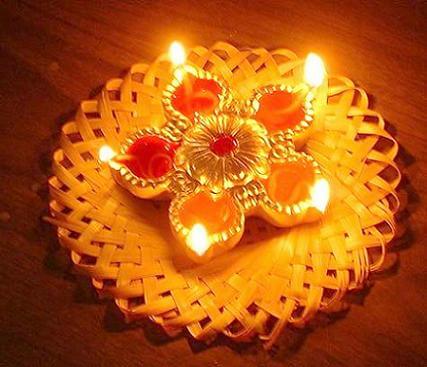Light is that magical ingredient which can make break the space. And Diwali is the festival of lights, which symbolises how light can take away all the darkness of our lives. The day is not only celebrated to light lamps everywhere but exemplifies that we should push out the darkness of ill qualities within us and enlightens ourselves with the light of wisdom.
This widely accepted and rejoiced Hindu festival is celebrated in the Hindu month of Ashvin and has many mythological legends behind its celebration.
History of Diwali
At some places, it is assumed that Lord Vishnu and Goddess Lakshmi were married on this day. While, Jain believe that Lord Mahavir attained the eternal bliss of nirvana on this day. In Bengal, there is a tradition to worship goddess Kali while in north India, Lord Ganesha and goddess Lakshmi are worshipped.
This day also marks the return of Lord Rama and goddess Sita after the exile of fourteen years, which led the people to light lamps to give them a warm welcome.
Significance of different days of Deepawali
Deepwali is a celebration of four days, where each day has its own significance. The first day of Diwali known as Naraka Chaturdasi, symbolizes the death of demon Narakasur by Lord Krishna. The second day of Amavasya is celebrated by worshipping goddess of wealth – Maa Lakshmi. This day also narrates the story of Lord Vishnu, who defeated Tyrant Bali by taking up a dwarf form.
Third Day of Deepawali also known as Kartika Shudda Padyami, is the day when Bali comes back to earth to spread happiness and joy and to remove darkness because of the boon given to him by Lord Vishnu. The fourth and the last day of this festival of lights is celebrated by sisters, who welcome their brothers with sweets and delicacies and this day is called as Bhai Dooj or Yama Dvitya.
Apart from these classical traditions, there are some other traditions also which has become a part of the celebration over these years. These include gambling, buying new utensils, exchanging sweets and gifts, etc. However the real essence of the festival remains intact, that is, whenever the ray of hope seems to vanish, all you need is to rejuvenate yourself with new light of knowledge and wisdom.
-Essay on Diwali Ends Here-
Related Tags: An Essay on Diwali could be translated in Hindi, Gujarati, Marathi, English (US, UK, Australia), Konkani, Tamil, Bhojpuri, Telugu, Malayalam, French, Spanish, German, Chinese, Assamese, Bengali, Oriya, Punjabi, Odia, Urdu, Arabic, Kannada, and other languages. However, you are not allowed to copy this essay for your school or personal work.
This essay is written in easy language which could be understood by students of class / grade 1, 2, 3, 4, 5, 6, 7, 8, 9, 10, 11, and 12.
Article Title: An Essay on Diwali for Students, Youth, Kids, and Children
Article last re-published on March 9, 2020. Original.
